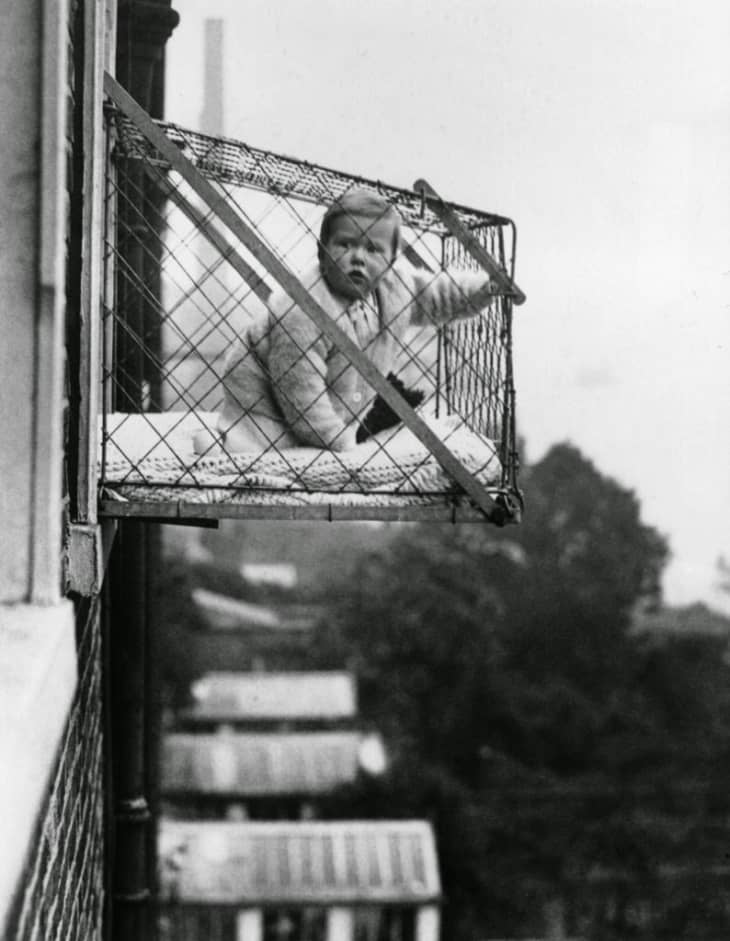这是真实的:婴儿笼
1930’s London wasn’t known for its plentiful fresh air or sunshine but for a quick minute, these babies got to soak up as much as they could of both…while dangling high above the city streets in a wire cage. Guess that’s one way to get your kid to play outside.
This incredible invention was brought to our attention courtesy of an hilariously tongue-in-cheek recentGothamistarticle. Designed for city dwellers without an outdoor space, the cages hung outside the window so babies could get fresh air (and evidently stay out of trouble) while their mothers got some housework done.
The man who started the fad was Dr. Luther Emmett, author of 1894 bookThe Care and Feeding of Childrenwho instructed parents that their babies needed “airing.” Here’s what he says:
How early may airing indoors he commenced and how long may it be continued?
Airing in the room may be begun, even in cold weather, when the child is one month old, at first for only fifteen minutes at a time. This period may be gradually lengthened by ten or fifteen minutes each day until it is four or five hours. This airing may be continued in almost all kinds of weather.
How should such an airing be given?
The child should be dressed with bonnet and light coat as if for the street and placed in its crib or carriage which should stand a few feet from the window All the windows are then thrown wide open, but the doors closed to prevent draughts. Screens are unnecessary.
What are the best hours for airing out of doors?
In summer and early autumn a child may be out almost any time between seven in the morning and sunset; in winter and early spring, a young child only between 10 or 11 A.M. and 3 P.M., although this depends somewhat upon the climate. In New York and along the Atlantic coast the early mornings are apt to be damp and the afternoons raw and cloudy.
On what kind of days should a baby not go out?
In sharp winds, when the ground is covered with melting snow, and when it is extremely cold. A child under four months old should not usually go out if the thermometer is below freezing point; nor one under eight months old if it is below 20° F.
Of what advantage to the child is going out?
Fresh air is required to renew and purify the blood, and this is just as necessary for health and growth as proper food.
What are the effects produced in infants by fresh air?
The appetite is improved, the digestion is better, the cheeks become red, and all signs of health are seen.
Oh really? An infant shouldn’t hang out a window in below-freezing weather? Cool. We’ll be sure not to do that anymore.
The baby cage itself wasn’t invented until 1922 by Emma Read. According to available photos we found, it looks like use of the cages peaked around the ’30s. In fact, the Daily Mail reports that the East London Borough council proposed to gift the cages to some of their city tenants to promote their use.
As this promotional video from British Pathé promises, “An out-of-this-world surprise awaits little Sally. From now on it’s high society and life in a penthouse for her!”
Want more baby cage info? Read more about them at:

